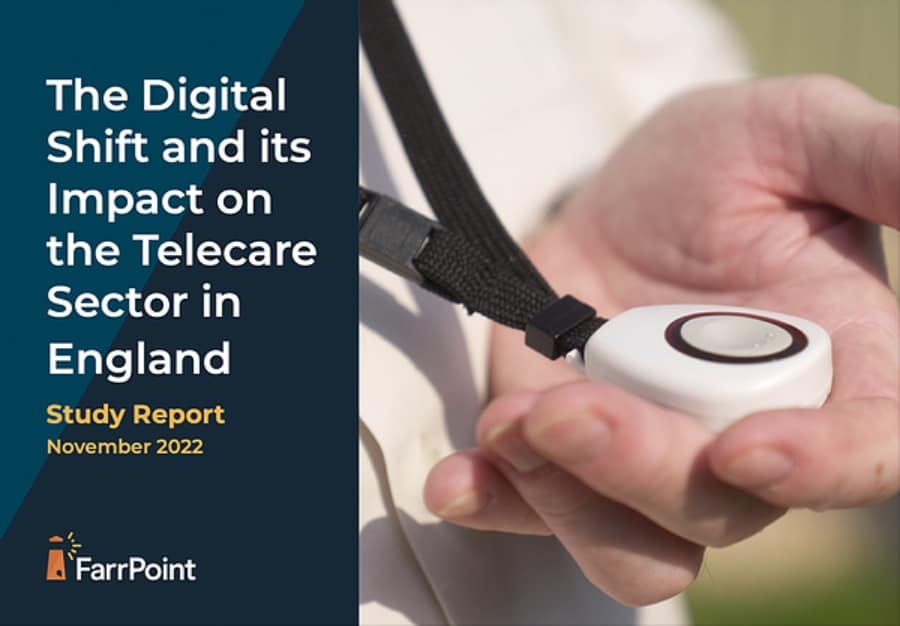DHSC responds to the telecare ‘digital shift’ with Telecare Stakeholder Action Plan
A new report from FarrPoint, commissioned by Department of Health and Social Care (DHSC), has highlighted the impact that the analogue switch-off will have on the telecare sector in England, including the key issues and risks associated with the ‘digital shift’ in relation to adult social care.
The Digital Shift and its Impact on the Telecare Sector in England report has been published, and, in response, DHSC produced a Telecare Stakeholder Action Plan based on the report’s recommendations.
The transition from analogue to digital telephone lines in the UK is taking place in a phased way up to the end of 2025. This ‘digital shift’ is relevant to social care as there is a risk that technology-enabled care (TEC) and telecare devices that rely on analogue telephone lines for connection, communication, and power back-up may no longer work, or work reliably, following the digital shift.
There are an estimated 1.8 million people across the UK who rely on TEC and telecare, who could be at risk if their analogue systems are not adapted or upgraded in time, meaning their alarm calls may fail to connect to their monitoring centre.
To mitigate risks, adequate planning is required by all organisations involved in the delivery and supply of TEC and telecare services, whether funded through health or social care budgets or privately funded, FarrPoint says.
DHSC commissioned FarrPoint to complete the study to understand the impact of the digital shift on TEC and telecare services and to gain greater understanding of the adult social care sector’s awareness of and current preparedness for the digital shift.
Additionally, DHSC needed to map available upgrade options and the support available to aid digital preparations and exploring opportunities to support wider digital transformation across the social care sector as a result of upcoming changes.
The study collected information from a range of stakeholders using online questionnaires and telephone interviews to understand the awareness of, and readiness for, the digital shift.
Stakeholders that engaged included telecare service providers; councils; housing providers; healthcare providers, where the providers were using a mix of commissioning and contracting arrangements; industry bodies representing social care, housing providers, and the telecare industry; service user representatives; and suppliers, including telecare and TEC equipment and services and telecoms providers.
Findings reveal consistently high levels of awareness of the digital shift and its impact on telecare amongst both providers and suppliers. However, it is highlighted that this result could be partly due to survey respondents being involved with the organisations that were already engaged with the digital shift.
FarrPoint states that there is currently limited information being offered by telecoms and telecare providers to service users and the public on the digital shift and its telecare impact, meaning awareness amongst these groups is low.
The study found that telecare services are predominantly offered by local authorities (at all levels), housing providers, and commercial providers.
These providers use a varied and sometimes complex mix of service delivery arrangements. However, almost all providers have responsibility for sourcing and installing their own in-home alarm devices.
Call handling arrangements were found to be more varied, with a split between providers that receive and handle their own calls, and those that contract or commission another organisation to do it on their behalf. Where another organisation is used, this is most commonly a commercial provider, though there are also sharing agreements in place with other local authorities and housing providers.
Furthermore, Farrpoint found that all providers currently use alarm devices and alarm-receiving centre (ARC) solutions from a relatively small range of suppliers, with Tunstall Healthcare having the largest market share.
Recently, East Renfrewshire Council became the first local authority in Scotland to introduce a fully digital, cloud-based platform for handling its community alarm system, having partnered with a European telecare provider.


